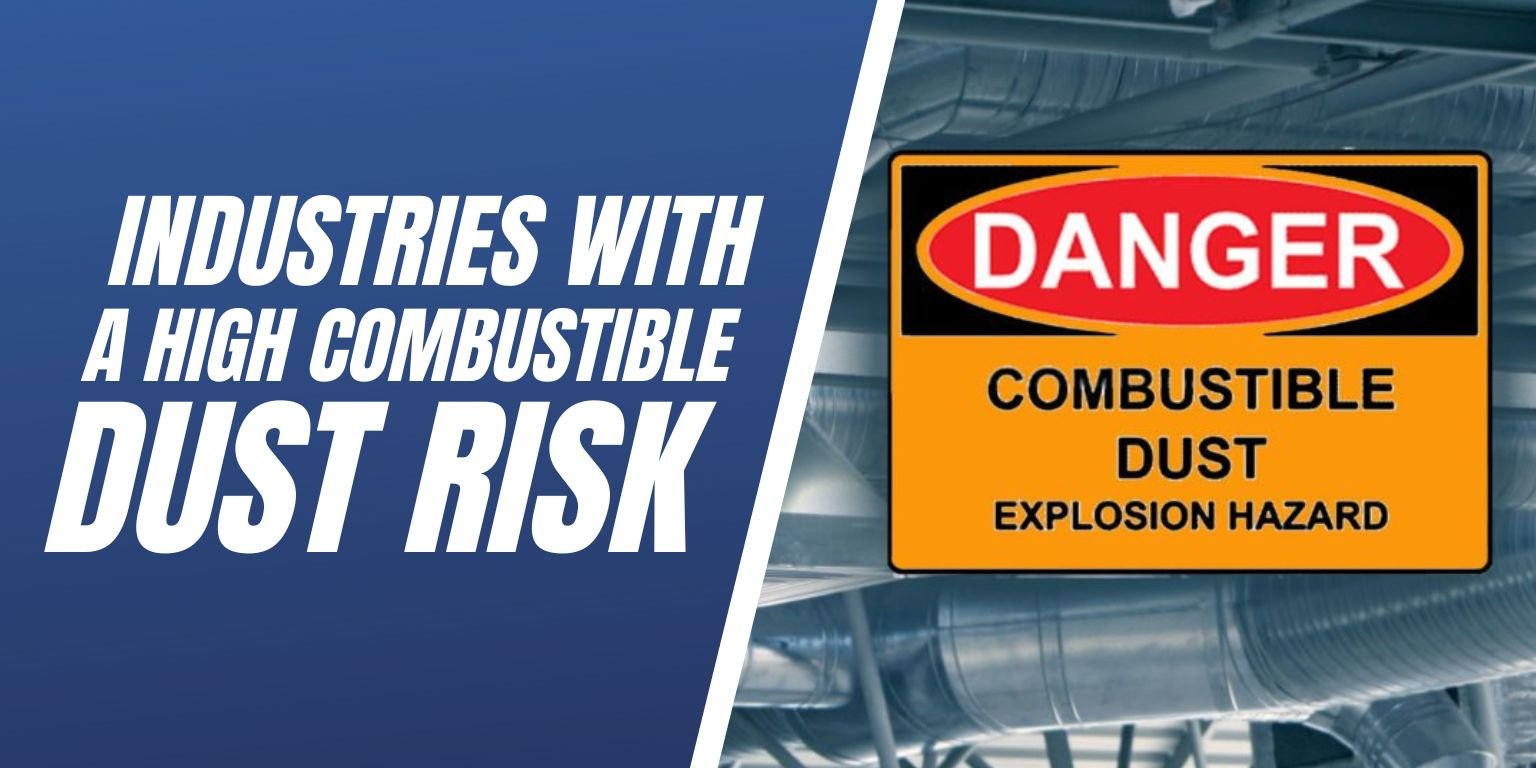
As an industrial facility, you can’t help but create dust from the manufacturing process. After a while dust will start to buildup on the floors, the machinery, high surfaces and even in the HVAC system. You might be thinking to yourself, “A little dust collected won’t hurt anyone”. Unfortunately, many fires and explosions in industrial facilities have occurred due to combustible dust that was not properly removed.
Typically, what happens is that there is a small initial explosion when dust on the ground is disturbed and ignited. This causes a shock wave to go through the building, disturbing the dust on the rafters and ceiling. This dust will fall down into the air, creating a much larger cloud, which causes a much larger explosion.
Industries With A High Risk For Creating A Dust Explosion
Both OSHA and the NFPA have requirements for handling combustible dust accumulations to help prevent a dust explosion from happening in your facility. However, some industries produce dust that are a potential risk for creating a dust explosion, while others produce dust that are a high risk for creating a dust explosion. So what industries are more likely to cause a combustible dust explosion?
- Wet Corn Milling
- Electric Services – Establishments engaged in the generation, transmission, and/or distribution of electric energy for sale
- Flour and Other Grain Mill Products
- Reconstituted Wood Products
- Chemicals and Chemical Preparations, Not Elsewhere Classified
- Prepared foods and miscellaneous food specialties, not elsewhere classified
- Electroplating, Plating, Polishing, Anodizing, and Coloring
- Secondary Smelting and Refining of Nonferrous Metals
- Pharmaceutical Preparations
- Wood Products, Not Elsewhere Classified
- Sawmills and Planing Mills, General
- Cane Sugar Refining
- Beet Sugar – Establishments primarily engaged in manufacturing sugar from sugar beets
- Molded, Extruded, and Lathe-Cut Mechanical Rubber Goods
- Motor Vehicle Parts and Accessories
- Aluminum Foundries
If your company falls under one of these industries it is essential that you have combustible dust removal performed regularly with equipment designed to remove the risk of an explosion. If not, dust will continue to accumulate, which will add more fuel to an explosion.
Hughes Combustible Dust Remediation
Hughes Environmental has performed combustible dust cleaning in a wide array of facilities throughout the United States and has dealt with many types of combustible dust. Our technicians are OSHA-trained and experienced in cleaning combustible dust. Hughes Environmental uses equipment approved for combustible dust cleaning, such as intrinsically safe vacuums and grounded hoses.
- Appropriate Safety Gear - Making sure that wearing safety gear while cleaning combustible dust is an important part of cleaning combustible dust. Using the proper PPE gear will help to ensure the health and safety of the individual who is removing the dust.
- Right Safety Equipment - There are only a few vacuums that are safe to use when cleaning combustible dust. Many dust collection systems just blow the dust around and keep it in the air, trying to have it eventually move into a collection area, but these cause hazards by creating an explosive dust cloud and making the air quality lower. Other dust collection systems do actually suck in and filter the air, but this causes dust to settle in the ductwork leading to the collection system. If the collection area becomes full, the dust can begin blowing backwards out of the vents, making the situation worse than before, and in the case of a fire the dust acts like a fuel, letting the fire travel throughout the building.
- Proper Training and Certification - In OSHA’s Combustible Dust National Emphasis Program, two of the most common citations were improper housekeeping, including combustible dust accumulation, and use of compressed air to blow down combustible dust. Having the proper training for cleaning combustible dust is one of the most important parts of cleaning combustible dust. Technicians should be trained in OSHA’s 10- or 30-hour Safety, Aerial Lifts, Confined Spaces, First Aid, CPR, and Combustible Dust Safety and Awareness.
Contact Us Here or call us at 888-845-3952 to find out how we can help you reduce your risk of a combustible dust explosion in your facility.

